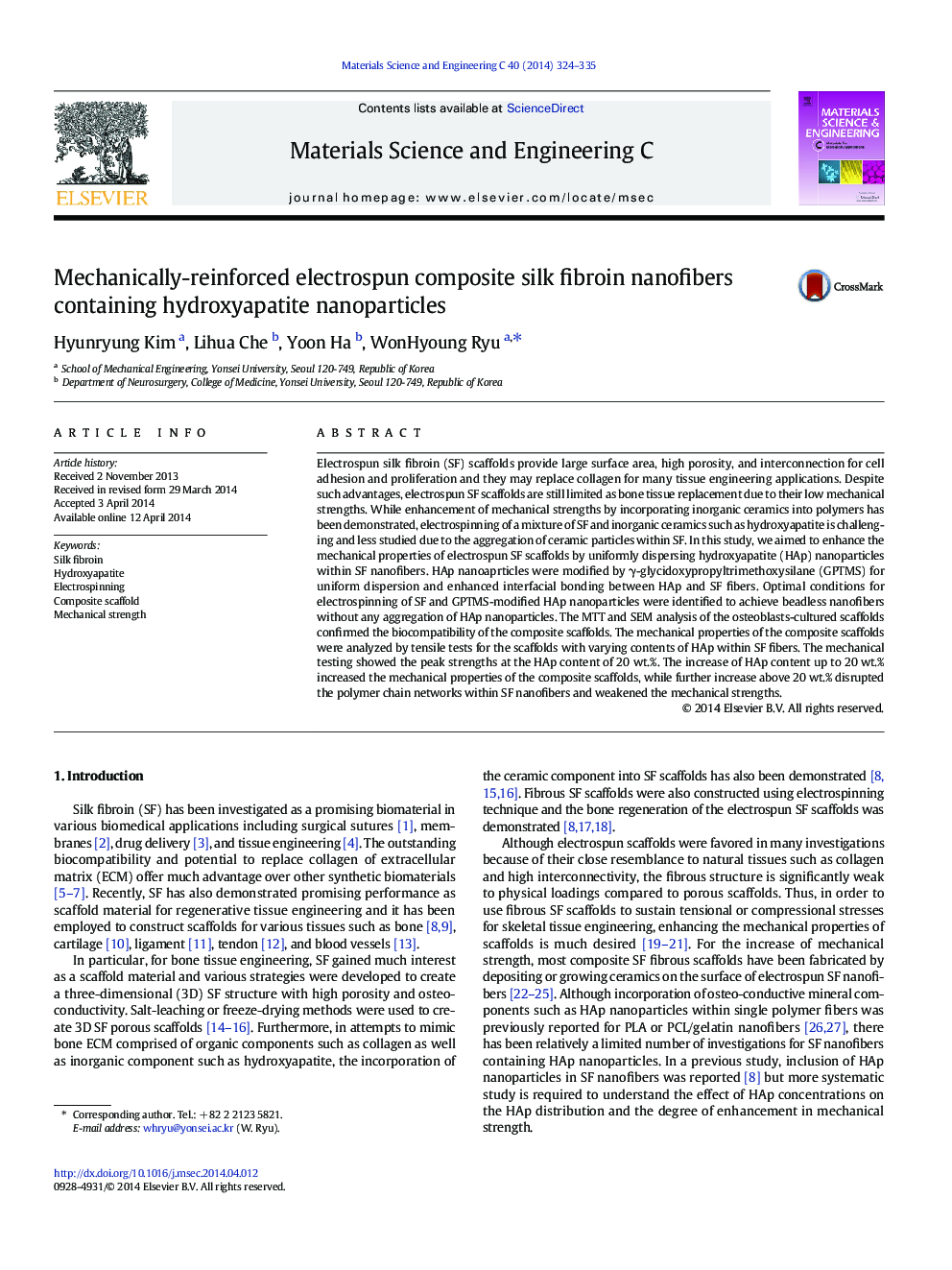| Article ID | Journal | Published Year | Pages | File Type |
|---|---|---|---|---|
| 1428349 | Materials Science and Engineering: C | 2014 | 12 Pages |
•Electrospun composite silk fibroin scaffolds were mechanically-reinforced.•GPTMS enhanced hydroxyapatite distribution in silk fibroin nanofibers.•Mechanical property of composite scaffolds increased up to 20% of hydroxyapatite.•Composite scaffolds showed cell viability comparable to collagen.
Electrospun silk fibroin (SF) scaffolds provide large surface area, high porosity, and interconnection for cell adhesion and proliferation and they may replace collagen for many tissue engineering applications. Despite such advantages, electrospun SF scaffolds are still limited as bone tissue replacement due to their low mechanical strengths. While enhancement of mechanical strengths by incorporating inorganic ceramics into polymers has been demonstrated, electrospinning of a mixture of SF and inorganic ceramics such as hydroxyapatite is challenging and less studied due to the aggregation of ceramic particles within SF. In this study, we aimed to enhance the mechanical properties of electrospun SF scaffolds by uniformly dispersing hydroxyapatite (HAp) nanoparticles within SF nanofibers. HAp nanoaprticles were modified by γ-glycidoxypropyltrimethoxysilane (GPTMS) for uniform dispersion and enhanced interfacial bonding between HAp and SF fibers. Optimal conditions for electrospinning of SF and GPTMS-modified HAp nanoparticles were identified to achieve beadless nanofibers without any aggregation of HAp nanoparticles. The MTT and SEM analysis of the osteoblasts-cultured scaffolds confirmed the biocompatibility of the composite scaffolds. The mechanical properties of the composite scaffolds were analyzed by tensile tests for the scaffolds with varying contents of HAp within SF fibers. The mechanical testing showed the peak strengths at the HAp content of 20 wt.%. The increase of HAp content up to 20 wt.% increased the mechanical properties of the composite scaffolds, while further increase above 20 wt.% disrupted the polymer chain networks within SF nanofibers and weakened the mechanical strengths.
